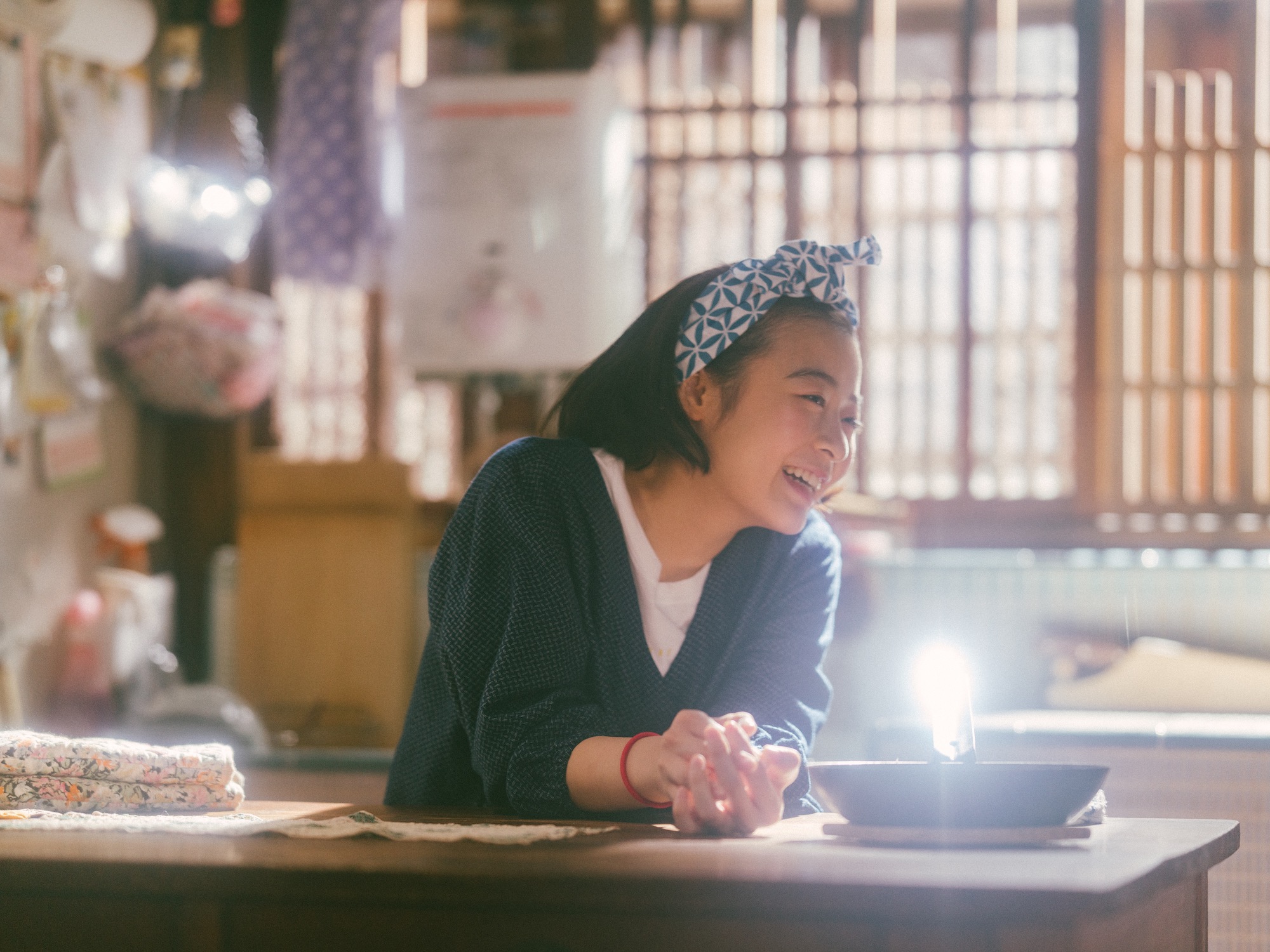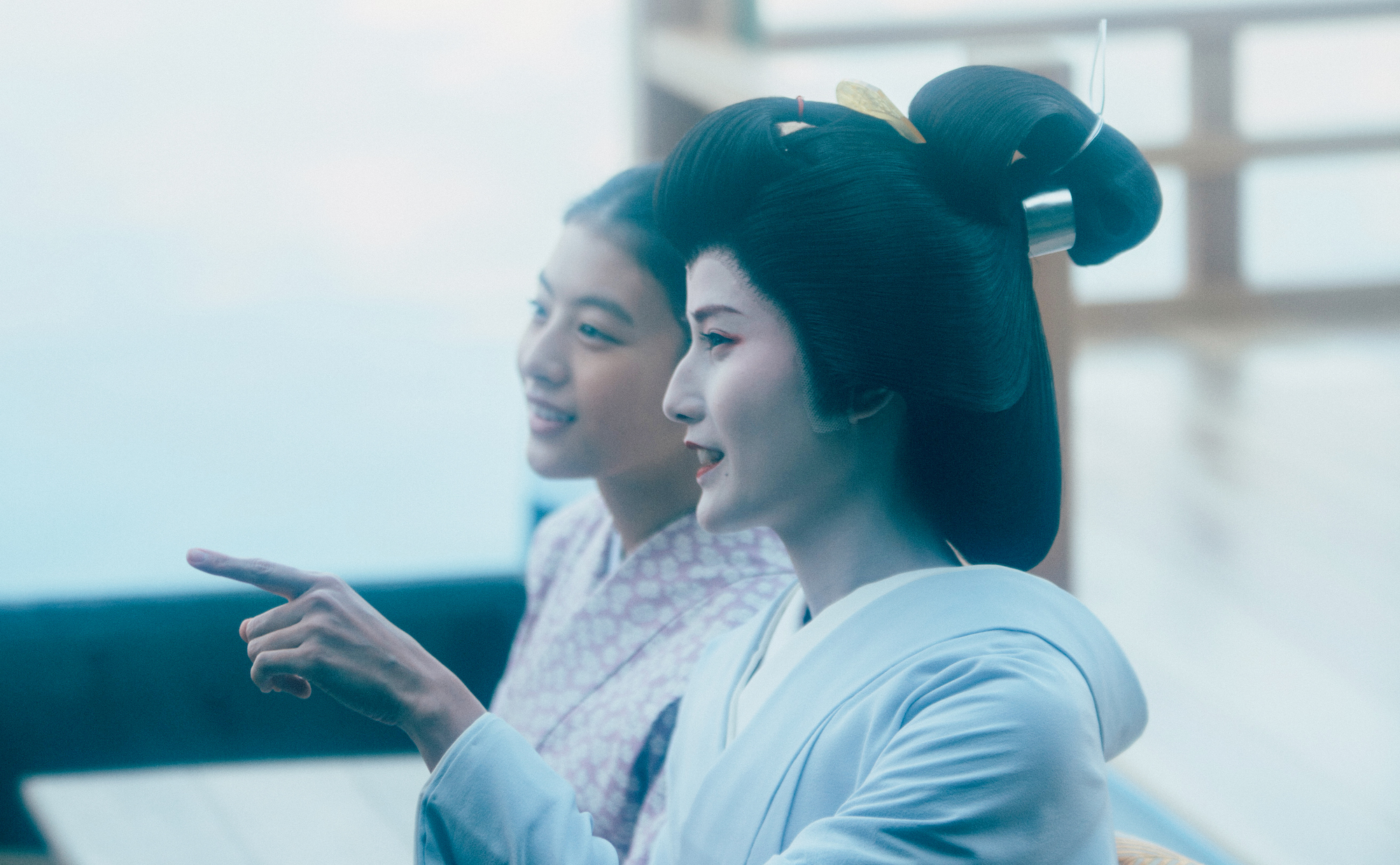It’s hard to make food look unappetizing on screen. Fill up the screen with the greasiest monstrosity you can muster and the very fact it’s on a TV gives it a certain kind of baseline appeal. Fiction has a way of priming our stomachs in a way that even real life sometimes can’t.
In a weird way, that makes the cooking in “The Makanai: Cooking for the Maiko House” feel like even more of a challenge. Kore-eda Hirokazu’s new Netflix series can’t just rest on looking at some rice dishes or stews. It needs to convey the idea that Kiyo (Nana Mori), a bright-eyed teenager looking for a new life in the Gion district of Kyoto, is so entranced by the possibilities of her own food that it changes her life.
“The Makanai” finds the same magic in the everyday that’s dotted Kore-eda’s film resume. He splits director duties on this nine-episode series, but as showrunner, he’s able to inject his brand of tranquility into Kiyo’s story. There’s a certain sense of wonder early on as Kiyo and best friend Sumire (Natsuki Deguchi) venture to Kyoto with dreams of joining the ranks of the maiko. They want to don the traditional facepaint and garb, master the art of traditional dance, and be the kind of attraction that young girls stop and take a photo with. That youthful certainty is presented without judgment or irony. When they arrive in Kyoto, the sunlit streets share in their awe.
The word “intimate” maybe gets overused when describing serene, cozy stories like this. But as Kiyo and Sumire spend more time at Saku house and get to know their peers and elders, that’s the feeling that begins to blanket the series. Even when the camera is on the other side of the room or the other side of a street and looking through a window, “The Makanai” captures the tiny dramas of everyday life with a lightness and clarity. It not only shows what Kiyo is experiencing in this new chapter of her life, but how she’s perceiving it.

“The Makanai: Cooking for the Maiko House”
Adapting Aiko Koyama’s popular manga series, “The Makanai” is built entirely on that perspective. It takes a story with disappointments and setbacks and misunderstandings and instead makes a show that’s filled with excitement and discovery. Kiyo’s disappointment at being rejected from her dream job turns to wonder as she finds herself in another role: cooking for Sumire, the other apprentices, and the rest of the house staff. At one point, Kiyo feels so at ease in her new position that she’s a little jealous of everyone else’s problems.
The real trick of “The Makanai” is that those problems don’t just disappear. As the show follows all the spokes out from Kiyo and Sumire at the center, there are some genuine anxieties from other characters who see themselves at more of a crossroads. There are persistent questions about love and the role it plays in the lives of those who want to pursue Sumire’s particular dream. There are casual reunions with old flames, and long-running questions about whether someone can get all of life’s necessary fulfillment solely from their work. Just like Kiyo’s friends describe her cooking as a mix of the ordinary and the extraordinary, “The Makanai” is sneaking in some weighty questions underneath an occasional glossy sheen.

“The Makanai: Cooking for the Maiko House”
There’s an added joy in watching “The Makanai” thrive on the tiniest details. It takes a certain kind of show to get real insight from who stole someone’s dessert from the fridge or the tender care for a batch of dried plums. In isolation, any of these component parts might seem fluffy or frivolous, but over the course of nine episodes, all of them add up to what makes these characters more than something out of a modern-day fairytale. That goes for Kiyo’s cooking too. A light char on onions, the garnish on a breakfast dish, the perfect consistency of breading. It’s idealized, “Chef’s Table”-esuqe presentation, but you also see the care and affection that Kiyo puts into it.
All of this emotional balancing makes this a kind of spiritual sibling to not just other Japanese dramas (see also: “Midnight Diner,” if you’re in the mood for more delicious on-screen meals), but something like “All Creatures Great and Small.” As that show is speaking to the present from the late 1930s, “The Makanai” is using a story in the present to touch on something timeless. A nimble score from vaunted anime composer Yoko Kanno helps keep this show moving between hazy daydreams and the practical realities behind them.
So, whether you come to the show for a story about enduring young friendships, delectable dumplings, the rigors of an artistic pursuit, or the episode-long treatises on the nature of unrequited love, “The Makanai” lets you take your pick. Even if you’re just looking for nine episodes of a main character with a dependable smile and a cheery disposition, Mori and Deguchi provide that too. It’s all presented with plenty of sunlight through the window, but this show is far more than empty calories.
“The Makanai: Cooking for the Maiko House” is now available to stream on Netflix.
In a weird way, that makes the cooking in “The Makanai: Cooking for the Maiko House” feel like even more of a challenge. Kore-eda Hirokazu’s new Netflix series can’t just rest on looking at some rice dishes or stews. It needs to convey the idea that Kiyo (Nana Mori), a bright-eyed teenager looking for a new life in the Gion district of Kyoto, is so entranced by the possibilities of her own food that it changes her life.
“The Makanai” finds the same magic in the everyday that’s dotted Kore-eda’s film resume. He splits director duties on this nine-episode series, but as showrunner, he’s able to inject his brand of tranquility into Kiyo’s story. There’s a certain sense of wonder early on as Kiyo and best friend Sumire (Natsuki Deguchi) venture to Kyoto with dreams of joining the ranks of the maiko. They want to don the traditional facepaint and garb, master the art of traditional dance, and be the kind of attraction that young girls stop and take a photo with. That youthful certainty is presented without judgment or irony. When they arrive in Kyoto, the sunlit streets share in their awe.
The word “intimate” maybe gets overused when describing serene, cozy stories like this. But as Kiyo and Sumire spend more time at Saku house and get to know their peers and elders, that’s the feeling that begins to blanket the series. Even when the camera is on the other side of the room or the other side of a street and looking through a window, “The Makanai” captures the tiny dramas of everyday life with a lightness and clarity. It not only shows what Kiyo is experiencing in this new chapter of her life, but how she’s perceiving it.

“The Makanai: Cooking for the Maiko House”
Adapting Aiko Koyama’s popular manga series, “The Makanai” is built entirely on that perspective. It takes a story with disappointments and setbacks and misunderstandings and instead makes a show that’s filled with excitement and discovery. Kiyo’s disappointment at being rejected from her dream job turns to wonder as she finds herself in another role: cooking for Sumire, the other apprentices, and the rest of the house staff. At one point, Kiyo feels so at ease in her new position that she’s a little jealous of everyone else’s problems.
The real trick of “The Makanai” is that those problems don’t just disappear. As the show follows all the spokes out from Kiyo and Sumire at the center, there are some genuine anxieties from other characters who see themselves at more of a crossroads. There are persistent questions about love and the role it plays in the lives of those who want to pursue Sumire’s particular dream. There are casual reunions with old flames, and long-running questions about whether someone can get all of life’s necessary fulfillment solely from their work. Just like Kiyo’s friends describe her cooking as a mix of the ordinary and the extraordinary, “The Makanai” is sneaking in some weighty questions underneath an occasional glossy sheen.

“The Makanai: Cooking for the Maiko House”
There’s an added joy in watching “The Makanai” thrive on the tiniest details. It takes a certain kind of show to get real insight from who stole someone’s dessert from the fridge or the tender care for a batch of dried plums. In isolation, any of these component parts might seem fluffy or frivolous, but over the course of nine episodes, all of them add up to what makes these characters more than something out of a modern-day fairytale. That goes for Kiyo’s cooking too. A light char on onions, the garnish on a breakfast dish, the perfect consistency of breading. It’s idealized, “Chef’s Table”-esuqe presentation, but you also see the care and affection that Kiyo puts into it.
All of this emotional balancing makes this a kind of spiritual sibling to not just other Japanese dramas (see also: “Midnight Diner,” if you’re in the mood for more delicious on-screen meals), but something like “All Creatures Great and Small.” As that show is speaking to the present from the late 1930s, “The Makanai” is using a story in the present to touch on something timeless. A nimble score from vaunted anime composer Yoko Kanno helps keep this show moving between hazy daydreams and the practical realities behind them.
So, whether you come to the show for a story about enduring young friendships, delectable dumplings, the rigors of an artistic pursuit, or the episode-long treatises on the nature of unrequited love, “The Makanai” lets you take your pick. Even if you’re just looking for nine episodes of a main character with a dependable smile and a cheery disposition, Mori and Deguchi provide that too. It’s all presented with plenty of sunlight through the window, but this show is far more than empty calories.
“The Makanai: Cooking for the Maiko House” is now available to stream on Netflix.

